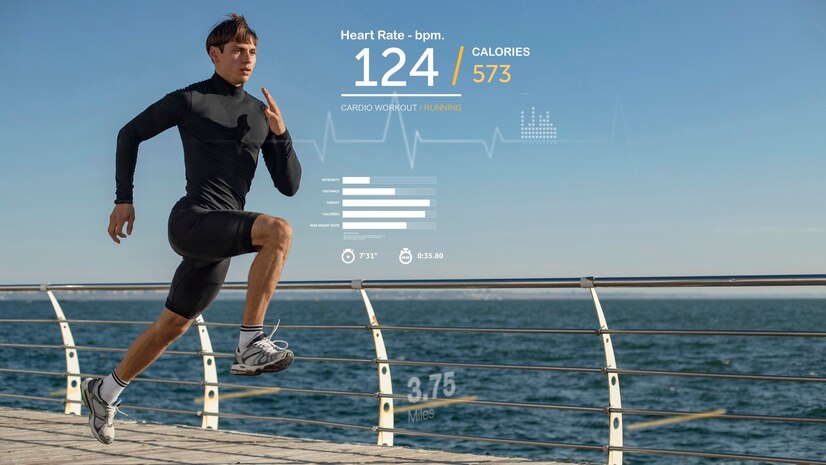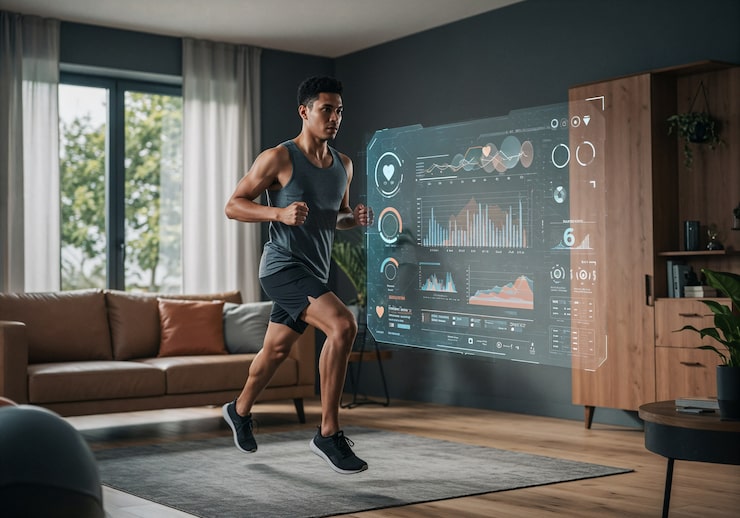The future of fitness technology lies in the confluence of bioelectronic innovation, predictive modeling, and electrical muscle stimulation. Dressmart is one such example of this revolution through cutting-edge sensor fusion and artificial intelligence to provide proactive, personalized fitness solutions. This article explains how leading scientific breakthroughs empower smart wearables like Dressmart to transition from passive monitoring tools into active tools that work actively to facilitate muscle growth, injury prevention, and optimal training through real-time adaptation and predictive feedback.
Bioelectronic Innovation in Smart Wearables
Bioelectronic innovation is revolutionizing the wearable technology market by making clothes continuously talk to the body on both electrical and biochemical fronts. Dressmart is a perfect instance of this through incorporating sophisticated bioelectronic sensors within its smart textile, which can detect muscle activity, skin temperature, and electrical activity generated during muscle contractions. The sensors tap into rich physiological information that cannot be detected through conventional wearables and offer richer insight into user health and performance. Recent science reports the manner in which bioelectronic innovation enhances instant feedback, enabling athletes to measure fatigue and recovery more accurately (Nature Biomedical Engineering, 2024). With these sensors integrated into Dressmart’s clothing so easily, the brand launches a new generation of smart sporting clothes that combines textile science with sophisticated electronics. This integration ensures that users gain access to continuous, accurate physiological monitoring dynamically tailored to their physical state, allowing for optimal training and injury prevention.
Predictive Modeling for Personalized Fitness
One of the most groundbreaking aspects of Dressmart is artificial intelligence-based predictive modeling to review physiological data and forecast upcoming fitness needs. The process uses machine learning to manage data from muscle activity sensors, heart rate monitors, and biomechanics inputs to forecast muscle growth rates, potential injury risk, and recovery schedule. The ability of predictive modeling to personalize training regimens through such insights forms a basis for adaptive fitness technology. Evidence has shown that exercise programs taught by predictive algorithms have significantly better outcomes compared with fixed routines, enabling personalized development and preventing overtraining (Journal of Biomedical Informatics, 2024). When users utilize Dressmart, they receive personalized, adaptive guidance that adapts to their physiological state so that exercises remain efficient and safe. This predictive power is a great instance of how smart sportswear can guide users to optimum performance in an anticipatory manner.
Electrical Muscle Stimulation Integration
Electrical muscle stimulation (EMS) is a groundbreaking feature in smart wearables that supports muscle strengthening and rehabilitation by applying targeted electrical impulses. Dressmart is at the forefront of incorporating EMS technology directly into its smart fabrics, allowing real-time stimulation of muscles based on data from embedded sensors. This integration of electrical muscle stimulation transforms Dressmart from a passive monitoring device into an active training aid, promoting balanced muscle activation and enhancing recovery. Scientific evidence highlights that EMS improves neuromuscular coordination, accelerates muscle growth, and reduces injury rates (European Journal of Applied Physiology, 2023). By synchronizing EMS with muscle activity data through sensor fusion, Dressmart provides precise and timely stimulation, enhancing the effectiveness of workouts and rehabilitation protocols. This advanced technology supports users in achieving superior muscle function with less effort and risk, setting a new standard for smart sportswear.
Sensor Fusion Technology Enhances Data Accuracy
Sensor fusion technology is essential to the high performance of Dressmart, combining inputs from multiple sensor types—such as electromyography, accelerometers, gyroscopes, thermistors, and ECG monitors—to create an integrated, accurate picture of the wearer’s physiological state. This fusion reduces measurement noise and error by cross-validating data streams, allowing for precise muscle activity monitoring, movement tracking, and health assessments. Scientific literature confirms that sensor fusion significantly improves data reliability in wearable systems, enabling more detailed and actionable fitness feedback (IEEE Sensors Journal, 2024). In Dressmart, this technology enhances the accuracy of predictive modeling algorithms and guides EMS activation. The synergy between multiple sensors and sophisticated analytics exemplifies adaptive fitness technology, empowering users with rich, trustworthy data to optimize their workouts and prevent injury.
Shaping Personalized, Adaptive Fitness Solutions
The future of fitness technology lies in fully adaptive fitness technology—systems that respond to real-time feedback and reconfigure based on individual physiological feedback. Dressmart is leading this revolution by combining continuous data capture, predictive modeling, bioelectronic innovation, and EMS into a single wear platform. With this integrated approach, Dressmart can deliver workout adjustments, recovery strategies, and injury prevention programs customized to each user’s unique needs. Studies prove that adaptive fitness technology that employ such smart technology will revolutionize individuals’ engagement with exercise and healthcare from passive programs to dynamic, data-based guidance (Trends in Biotechnology, 2024). With constant sensor monitoring and AI, Dressmart allows users to optimize training effectiveness, improve muscle balance, and maintain long-term physical health. Such balanced, science-informed solution sets the benchmark for smart sportswear and fitness design.
Conclusion
Smart sportswear innovation such as Dressmart is revolutionizing fitness by embracing the convergence of bioelectronic sensors, predictive modeling, and electrical muscle stimulation. Such technologies turn wearables from mere monitoring tools into active, adaptive training and rehabilitation allies. Through sensor fusion for higher quality data and machine learning for customized analysis, Dressmart offers consumers scientifically proven tools that predict requirements, optimize performance, and avert injury. With the industry moving forward, innovations such as these will be the norm, providing individuals with smart, dynamic fitness equipment that adapts to them—enabling a new era of sporting achievement and health.




